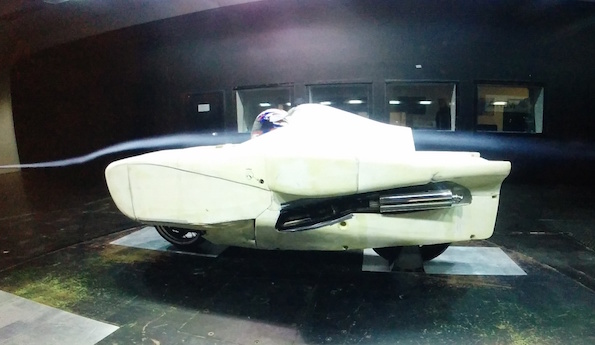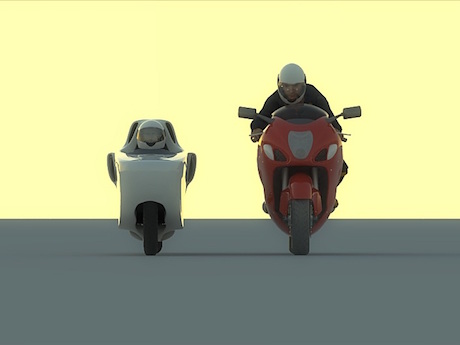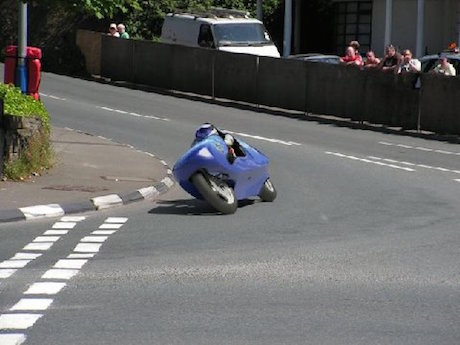An aerodynamic “Monoliner” motorcycle has recorded the lowest aerodynamic coefficient of drag for a motorcycle in a wind tunnel and could prove to be the future of electric bikes, according to a British aviation electrician/mechanic.
Monoliner project leader Colin Russell now wants to take his Monoliner racing in the European Moto E electric bike championship and believes racing cred and streamlined bikes will be the catalyst for public acceptance of electric bikes.
“There are lots of people in denial at the moment that say e bikes will never come to much,” he says. “Protagonists of the ICE (internal combustion engine) and lovers of motorised bicycles have no real will to try and understand the immense benefits an electric power train brings and in particular how a low centre of gravity bike with stable and effective chassis and streamlining performs.”
Faired motorcycles as “slippery” as the Hayabusa have a drag coefficient of about 0.55 to 0.60. The Monoliner recorded 0.21.
“This was the best the aerodynamicist had seen,” Colin says. “It is certainly better than any other motorcycle currently being produced either road or race. Fully enclosed two-wheelers and cars can better these figures, but can be inherently unstable at speed, particularly in turbulent air and crosswinds.”
He believes that battery technology will not provide enough range from electric bikes to suit most riders for at least another 10 years. Meanwhile, he says gains in range can be attained by reducing aerodynamic drag.

“With all current ebikes (and ICE bikes) using 80% of their energy in moving the fluid we call air around the bike and rider, no wonder ebikes struggle to get better than 60 to 100 highway miles (160km) range and under 40 miles (64km) at racing speeds,” he says.
“Improved battery tech will increase range, but the ‘Moores Law’ timeframe for batteries is over 10 years, I am told. So I am not sure I will see conventional e motorcycles with big ranges in my lifetime. Other solutions will be available including on-the-fly charging and supercharger points, but I won’t hold my breath.
“Streamlining is free-range and performance. If it is done correctly, with an understanding of two-wheeler aerodynamics, the shape and seating position of the bike has to change dramatically.”
His strange-looking “tech demonstrator” is currently powered by a Husqvarna Nuda 900cc engine and was designed by Royce Creasey of the F1 Williams team.
“Getting efficiencies close to the historic benchmark Cd figure of 0.19 at our first attempt is very satisfying” Colin says.
“The figures we recorded are nearly three times better than any other current production road or racing motorcycle.”

The electric eMonoliner will be a different design, much lighter and smaller, but incorporating enhancements learned from wind tunnel tests.
Colin hopes to start racing his eMonoliner next year if he can attract more funding and/or investors.
He believes his streamlined bike can take on the bigger, better-financed teams.
“It beggars belief that in the Moto E rules is the revocation of the 1954 rules banning streamlining and there are no streamlined bikes currently on the grid,” he says.
“The old adage of ‘win on Sunday, sell on Monday’, is probably not a true reflection of what happens today, but what it could be however is ‘race on Sunday, influence on Monday’.
“So racing could do some good for electric bike acceptance.”



